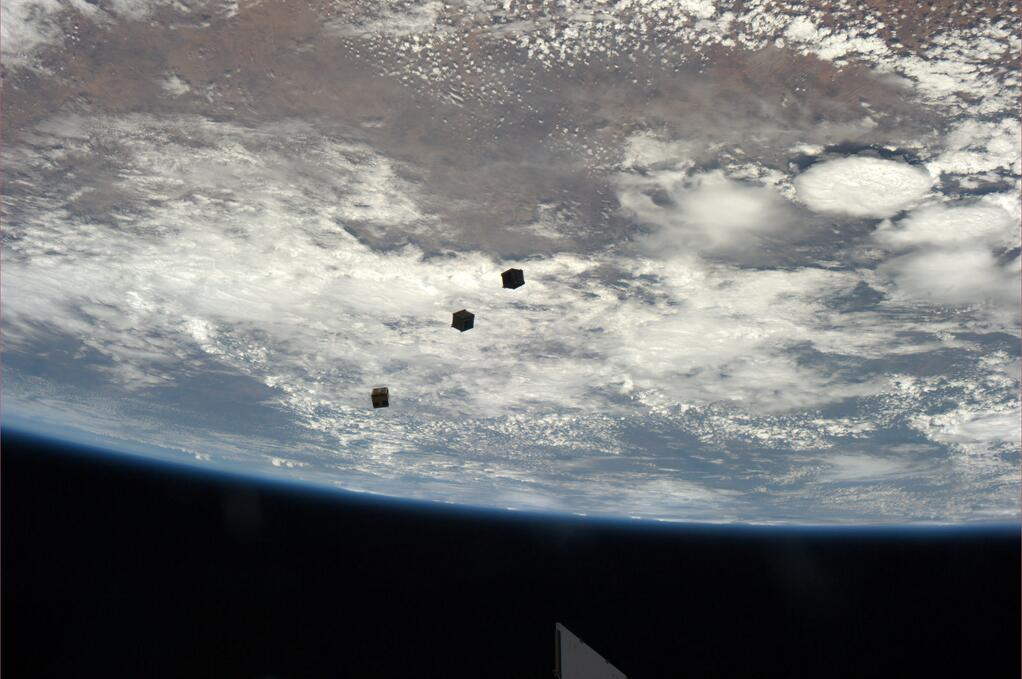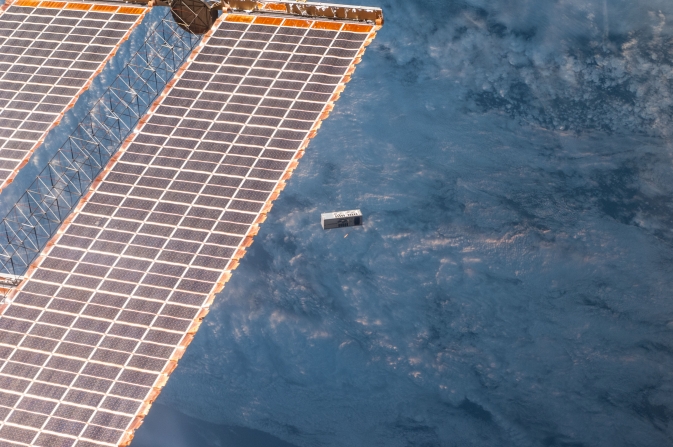Space Station Astronauts Fire-Up Awesome 'Cubesat Cannon'

As if the International Space Station couldn't get any cooler, the Japanese segment of the orbiting outpost has launched a barrage of small satellites — known as "cubesats" — from their very own Cubesat Cannon!
Of course, the real name of the cubesat deployment system isn’t quite as dramatic, but the JEM Small Satellite Orbital Deployer (J-SSOD) adds a certain sci-fi flair to space station science.
ANALYSIS: Mysterious Missile Launch Seen From Space Station
The Japanese space station module, Kibo, is equipped with its own robotic arm and exterior platform that can be used to carry out experiments not only in microgravity, but also in the vacuum of space. It is with the robotic arm, with J-SSOD attached, that, on Nov. 19, three cubesats (one joint Japan/Vietnam Earth-imaging experiment and two NASA-sponsored missions) were launched with the help of Japan Aerospace Exploration Agency (JAXA) astronaut Koichi Wakata and NASA astronaut Mike Hopkins.
Via Kibo’s airlock, the exposed JEM platform can be accessed, and the pre-prepared, spring-loaded J-SSOD could be attached and sent to the space station’s exterior where the robotic arm attached itself to become a cubesat launcher. The system was previously tested in October 2012, launching five cubesats.
Wakata and Hopkins arrived at the station as members of the Expedition 38 crew on Nov. 7.
Per the JAXA project website:
Breaking space news, the latest updates on rocket launches, skywatching events and more!
"JEM Small Satellite Orbital Deployer (J-SSOD) is a mechanism for deploying small satellites designed in accordance with CubeSat design specification (10cm×10cm×10cm) that transfers the satellites from the Japanese Experiment Module Kibo’s airlock to space environment and releases them on orbit."
PHOTOS: An Awe-Inspiring Space Station Odyssey
In a Twitter update by Wakata on Nov. 19, a photo of the three satellites was posted (below) along with a message saying that he had worked with the Tsukuba Space Center team to launch them (original Japanese language tweet).
Then, on Nov. 20, Wakata posted a photograph of the J-SSOD in action, along with the message:
2nd day of small satellite deploy. KIBOTT team at Tsukuba successfully sent commands to deploy a NASA AMES satellite. pic.twitter.com/67VMGZLvUa — Koichi Wakata (@Astro_Wakata) November 20, 2013
PHOTOS: Dragon’s Bounty: SpaceX Mission Complete
The Nov. 20 deployment (pictured top) was of the TechEdSat-3 nanosatellite developed by NASA's Ames Research Center "to validate an aero-braking mechanism called Exo Brake," according to Aviation Week. This satellite is a 30×10×10 centimeter mission, hence its rectangular appearance.
Cubesats provide a lightweight and low cost means of getting small experimental payloads into orbit. And as these photos show, their deployment from the International Space Station make for some great photo opportunities.
This article was provided by Discovery News.
Ian O'Neill is a media relations specialist at NASA's Jet Propulsion Laboratory (JPL) in Southern California. Prior to joining JPL, he served as editor for the Astronomical Society of the Pacific‘s Mercury magazine and Mercury Online and contributed articles to a number of other publications, including Space.com, Space.com, Live Science, HISTORY.com, Scientific American. Ian holds a Ph.D in solar physics and a master's degree in planetary and space physics.

